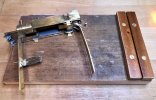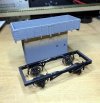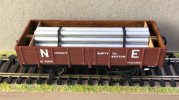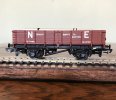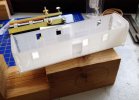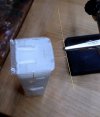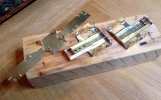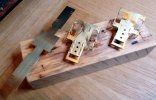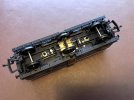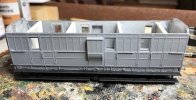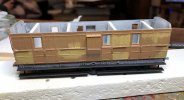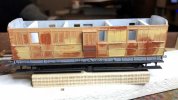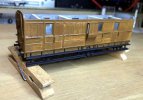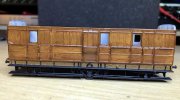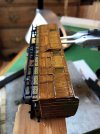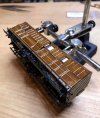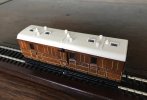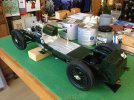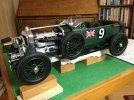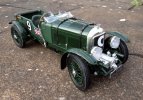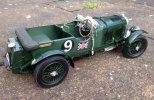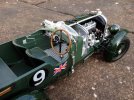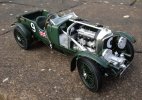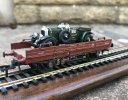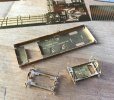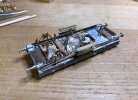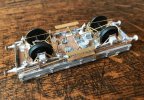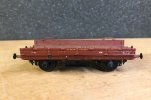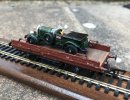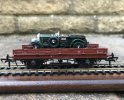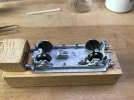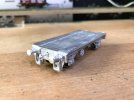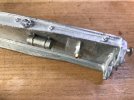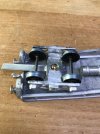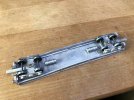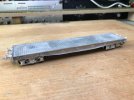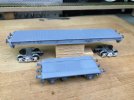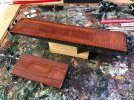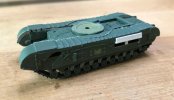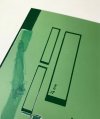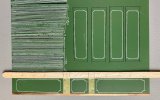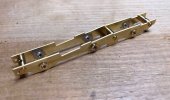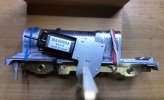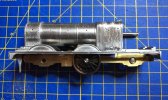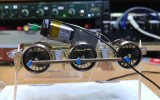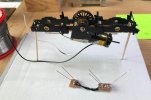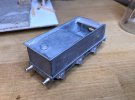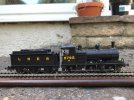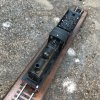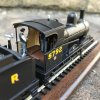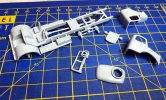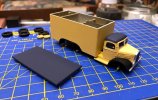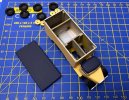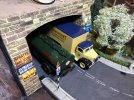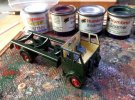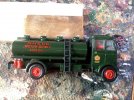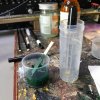Work continues on the GNR C2, but I've been posting that build in detail on RMWeb and I don't want to duplicate the same material here - I'll put up more photos of the C2 here when it reaches the next significant stage - so it seems a good time to change tack again and look at something else, in the form of some RTR restoration.
Although I mainly model LNER and GNR, I also have an interest in European railways, especially Swiss; I'd wanted a Crocodile for ages, but there's something about the Roco one - the easiest and cheapest to find - that I wasn't entirely happy with so I'd steered clear, until I saw an earlier Roco model in its Austrian form, an OBB BR1189. For some reason, to my eye these have a more solid, less plastic looking appearance than the Swiss versions; this one was cheap and being offered in the UK, so I took a punt:
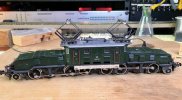
It had been described as a non-runner, supposedly due to a DCC problem - "motor tries to run but wheels don't move" - but a quick look revealed no DCC fitted and drive belts so hardended they had permanently assumed the oval shape formed by the motor and axle pulleys - the one on the right in the photo below was cut from this model (the only way to remove it) and the circular one on the left is a fresh one:

I wonder how long this loco had sat unused for the belts to become so rigidly set? Must have been many years, I think. They're quite awkward to get at - hence having to cut out the old ones:
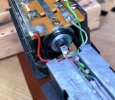
The other problem was the heavily corroded pickups - the paper insulation layer between them was already disintegrating:
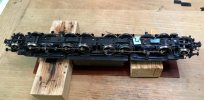
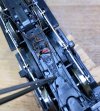
Fitting new pickups is a little fiddly, with wires fed up through the bogies, soldered below to the pickups and above to the board:

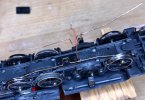

The pickups are sandwiched between screwed together plastic plates, a good arrangement (until age and oil make them brittle) but you need to use the minimum of solder in joining the wires to the pickups to make sure the plastic pieces mate properly: too much solder, and the solder 'lump' prevents them closing up, which stops the central screw engaging its retaining thread beneath the bogie. How do I know this? Guess...!


Good beefy pickup wire, too... The upper wiring is kept tidy by the plastic lighting transmission pieces:

And everything looks - and runs - a lot better with the new assemblies in place:
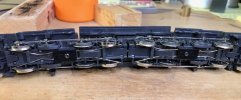
One thing to look out for: the quatering! Those conn rods need to be on the right sides of the right bogies and they need to be the right way up. Marking them, as you remove them, with side and orientation, is the best way, along with lots of photos as you work: I'll know for next time!!
It's a very nice runner - though not the quietest, compared to the latest RTR machines - with excellent haulage power, by virtue of its not inconsiderable weight and the fact that both bogies are driven. I also have a Roco SBB Be 4/6 which I think is the same chassis, but that's run so beautifully for many years that I've never had occasion to take the bodyshell off - a good recommendation for the design.




